This was my first experience of a starter set – intended to provide a nice introduction to new players of Warhammer Fantasy Roleplay.
The bulk of it is three documents – a Guide to Ubersreik, the Adventure Book, and half a dozen pregenerated characters. Rules are provided on a few individual summary sheets, as well as being explained in the beginner adventure text. I’m intending to cover WFRP 4E’s rules in a separate post (see here), so this is a review of the rest of the Starter Set.
Note that spoilers abound for the adventures.
Pregenerated characters
I really like the format of the six pregen characters. Each consists of a marvellous picture, full character sheet, and some great roleplay material. As well as age, family and so forth, you get: drives (choose 1 of 3, although all seem appropriate – things like “getting drunk with Gunnar” or “defeating a big monsters”; when you achieve one of these, you regain a Resolve point); Connections (what they think of each of the other pregens); and Secrets (which you can choose one or more of, gaining more starting money for each you choose – things like Gunnar being secretly ticklish, or Sali being an alcoholic).
The characters themselves are universally fantastic. Sali is a natural leader with a no-nonsense style, but regresses somewhat when drinking. Gunnar is a classic Slayer – except that he secretly regrets his Slayer’s Oath (brilliant!). Molli is a Halfling Thief who genuninely has a different approach to morality – she likes hugging everyone and snuggling (in a non-romantic way) while sleeping. Ferdinand – probably the most boring character – is a terse wizard’s apprentice who desires to do good. Amaris is a High Elf merchant who finds Humans really interesting, and loves finding out more about their society (something I don’t think I’ve ever come across before in Warhammer!) And Else is a slightly unhinged Witch Hunter who secretly has a crush on Amaris which she hates herself for.
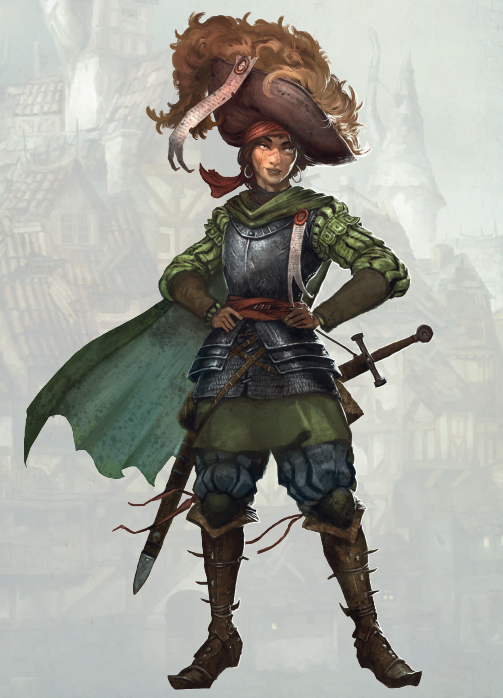
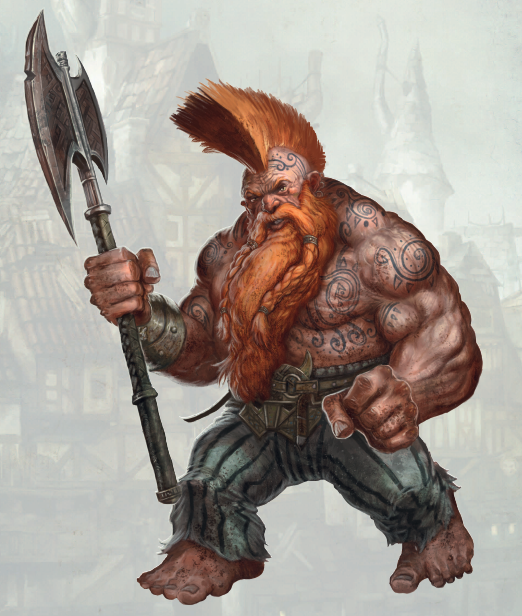
There is some really good characterisation here. Mechanically the characters appear to fulfil different roles (Sali as leader and melee; Gunnar as pure melee; Molli as thief and ranged; Ferdinand for magic; Amaris as an all-rounder, particularly good for intelligence and social skills; and Else as a ranged character). I am a little mystified that skills and talents have a lot of overlap – I think four of the six characters have Read/Write, for instance, two are good at Charm Animal; while only one of them has a Lore skill, and none having Tracking. Odd. From a roleplay perspective I also find a couple of decisions a little problematic. One of Amaris’ possible secrets is that he doesn’t actually like Humans that much – its all an act. This takes away his main personality trait and replaces it with… nothing at all. Odd. More seriously I feel a little uncomfortable about encouraging new players to roleplay a clearly mentally ill character in Else. She feels really strongly that burning people is a good thing to defend the Empire… its not that it doesn’t fit into the Warhammer setting, its just it feels a bit tricky to potentially give to a new roleplayer. None of these issues are huge – after all, you can just ignore those bits of the characters and still be left with some fantastic characters.
Making The Rounds
The Adventure Book (written by Andy Law, TS Luikart and Ben Scerri1) consists of the main starter adventure, Making the Rounds, plus ten other adventure outlines.
Making the Rounds is dripping with character and designed to help new players get a feel of both the Warhammer world, and become familiar with the basic rules. It starts off with a marketplace brawl that is probably better than any combat in any of the WFRP 2 adventures I’ve read. You’ve got a fun location and fun co-combatants (a carnival troupe), plus some interesting events that occur mid-combat, like a pig running amok (potentially knocking people over) and some thugs taking the opportunity to menace a young girl and her nanny. Decisions the PCs make here can have (minor) consequences later on, which is welcome.

The next section is rather rail-roady, as the PCs end up in a rigged trial that lands them seconded to the corrupt City Watch (the alternatives being execution or forced labour in the Grey Mountains). While seconded to the Watch there is no consideration given to the fact the PCs might shirk their duties or just leave Ubersreik altogether. I have mixed feelings about this. I do tend to be more lenient on starter adventures than I might otherwise be – and the rigged trial is supposed to give the players a taste of Empire (lack of) justice. On the other hand, I feel like some effort should have been made to give the PCs a good reason to carry out their Watch duties (beyond “this is the adventure”).
Anyway, in the Watch they are assigned to the care of a thoroughly corrupt sergeant (he’s basically an even-more-amoral version of Colon from Ankh-Morpork) who is a fantastic character. Through a variety of encounters his venal character is marvellously communicated, and consideration is given to the option that the PCs might go ‘on the take’ themselves, or that they might choose heroism in spite of the temptation to do otherwise. Meanwhile the PCs also get three mini-adventures; two are rather good – discovering a river troll responsible for a spate of mysterious disappearances, and getting involved in a complex double-cross of a charlatan and a Dwarf thug trying to fleece a group of merchants – and the third is rather lacking (tracking down a murderer – where virtually no detail is given to how this might play out). The river troll combat is another excellent one – atmospheric and with a number of special rules that showcase how 4th edition can make monsters quite interesting to fight – although I do think that asking a neophyte GM to adjudicate several special rules might be a bit unfair!

The final element of the adventure is the PCs being approached by a veteran road warden who asks them to escort a condemned prisoner to his place of execution outside the city. It feels a bit disconnected from the rest of the adventure (it doesn’t especially pay off anything from earlier, save for a potential rescuee) but is otherwise excellent. There is the mystery and superstition around the condemned: two previous execution attempts have failed ‘by chance’ and if the third fails then he will be set free – a great setting detail. Plenty of space is given to the PCs’ potential investigations of both the prisoner and the road warden, and the possibility is entertained that they’ll turn the job down (although that produces a less interesting result). Assuming the PCs do agree, the actual job is marvellous – escorting the prisoner through the empty streets of Ubersreik which are changed by (presumably) the malign influence of Morrsleib into a nightmarish scape, while cultists attack. The adventure ends with an interesting moral choice – do they free the prisoner, having discovered that his victims were cultists who wanted to recruit him? Do they condemn him anyway as a mutant? There are plenty of endings entertained, some of which are very dark (and can leave the PCs in a sticky situation).
I always feel that good WFRP adventures contain interesting situations and characters; plenty of atmosphere; and a minimum of supernatural elements. While Making The Rounds succeeds in all three. Characters like the corrupt Watch Sergeant and the condemned prisoner are memorable. Situations like the brawl at the beginning, the trial, and the final gauntlet of the changed streets are both interesting and atmospheric. It contains more interesting and involved combat sequences than anything I can recall from any 2nd edition adventure (!) And while the final section ups the supernatural elements, it is really the only section of the adventure that does so – and has the lovely benefit that it is something that only one or two people witness aside from the PCs, and could even be all in their heads.
All told, a fantastic adventure which I think rivals some of the 1st-edition greats. A fantastic start.
Other adventures
The ten adventure outlines in the Adventure Book consist of four general adventures, and one each geared to the six pregenerated characters. They’re a bit of a mixed bunch – necessarily due to space they tend towards either feeling a bit rail-roady, or else being so open that its hard to work out exactly what the plot is. So the marvellously-named Hassle of Johann Hofflestein presents the PCs with investigating a disappeared agitator, and gives you six NPCs who all have a motive for why they might have ‘disappeared’ him. That’s it – there’s no real detail about how the PCs might meet the NPCs, how they would interact with them, or what they might do in response. Conversely both Else’s personal adventure (which is about investigating a witch with echoes to a case of her mother’s career as a Witch Hunter) and Amris’ (which involves a high elf trying to take him back to Ulthuan, and a Wood Elf cult of Nurgle (!) claiming they can help), are both laid out in such a way that it feels like there isn’t a great deal of player agency involved. Neither of these are, I think, massive problems – with a bit of GM work you can provide some more structure to the open-ended adventures, and more player options for the strait-jacketed ones.
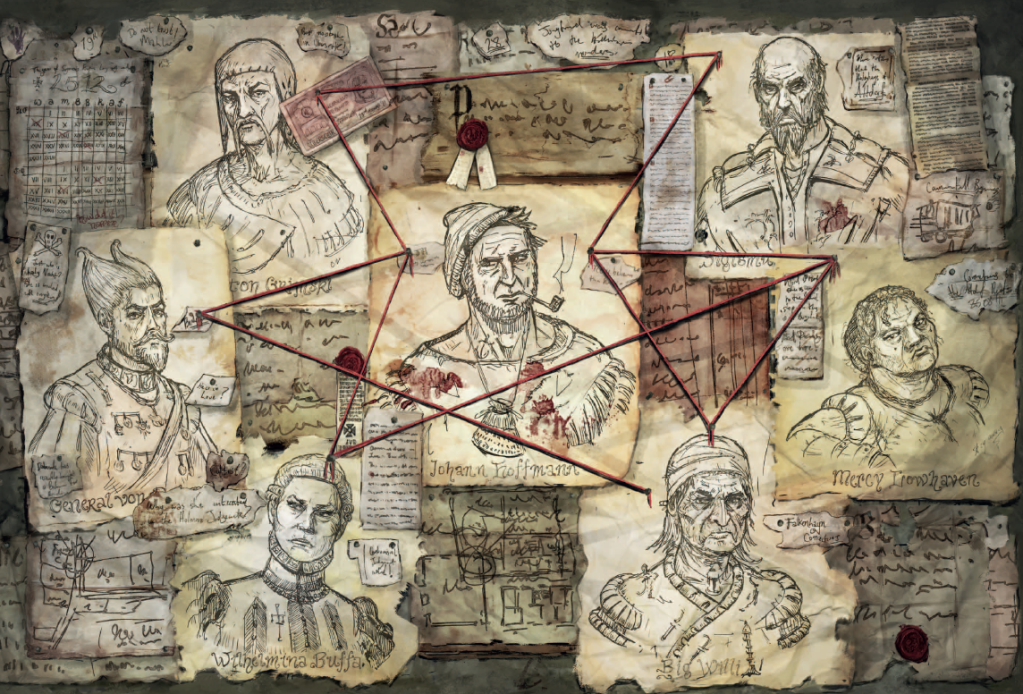
Otherwise Gunnar’s adventure outline – which involves an old rival who has taken over an old Dwarf forge – is pretty interesting. Conversely Salundra’s personal adventure is a very standard “village with secret Chaos cult” plot which I didn’t care for at all, and a couple of the general adventure outlines were rather dull as well: one about an Ulrican werewolf that didn’t really have anything to recommend it, and another (“The Littlest Waaagh”) which has some goblin adversaries with a fun motivation which the PCs will probably sadly never discover and a rather threadbare plot.
On the other hand, there are a couple of absolute gems here. One involves an ex-mercenary turned innkeeper, who finds a number of old enemies on his trail and needs the PCs help to escape by blowing up his inn and faking his death. While it strained credibility that four groups of enemies could happen to converge on the man at the same time, and the adventure’s denouement feels like it hits the reset button unnecessarily, I love the concept here, and the issues can be fixed pretty easily. (I would remove one of the four sets of enemies, and have one set be simply tailing another set – meaning you only have a single coincidence instead of four!) The second great adventure is Molli’s personal one, which involves her trouble-prone twin sister (which in itself provides some nice opportunities for mistaken identity) and results in the PCs, a Slaaneshi cultist and a Grey Wizard Chaos-hunter all sneaking around the big castle in Ubersreik after dark and tangling with each other… plenty of potential for hilarity to ensue!

Guide to Ubersreik
The Ubersreik sourcebook (written primarily by Andy Law and Andrew Leask2) is absolutely excellent. It is akin to the 2nd edition city sourcebooks for Altdorf, Nuln etc, being of a similar length and format. However it exceeds all of them handily for several reasons. Firstly it is just written better – it is highly readable and almost every minor NPC (shopkeeper, guildmaster, guard captain etc) has some memorable detail – many of which are secrets the PCs can uncover and could form the hook for a mini adventure (a few secret cult members, both Chaos cults and Ranald; master craftsman is secretly an Elf; guildmaster moonlights as a burglar; nobleman has quit town and left his wife behind to auction off their possessions, but she doesn’t want to leave etc). Pretty much every location also has a couple of adventure hooks which makes the whole book just froth with possibilities – it really feels like a good GM could let the PCs wander through Ubersreik and generate adventures just by interacting with the townsfolk detailed here.
The artwork is also absolutely stellar. Every inn or tavern has its sign depicted, every few pages there is a gloriously evocative scene which brings the town to life, and every chapter has a couple of NPCs detailed, complete with superb portraits (as well as more adventure hooks). I really appreciate good art in RPG books – and 4th edition has lots of high-quality art which puts the rather variable 2nd edition artwork to shame.
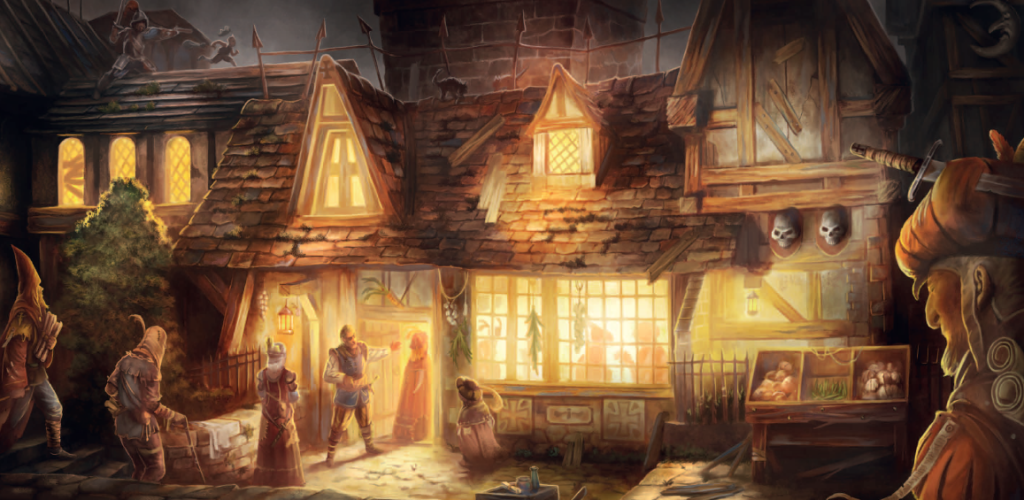
One of the things that really impressed me is how dynamic Ubersreik is. The cities in 2nd edition were largely static – this is the status quo and no real consideration is given to how it might change (although there are a couple of notable exceptions, such as the rulership of Talabheim being in flux with the disappearance of the Elector Count). By contrast Ubersreik very much feels like it is going through a time of changes. For unknown reasons, the Emperor has just sent the Altdorf Army to depose the previous ruler, who has fled; many have been executed. This immediately provides an interesting situation – the Army are regarded by many as occupiers, and many of them have been drafted into the Watch to replace loyalists to the old rulers – a posting they despise. The Town Council, previously lacking much political power, has now gained it, with some members pushing to have Ubersreik declared a Freistadt, while the de facto rulers (both representatives of the Emperor) are awaiting a decree on who will formally replace the older ruler. Other local lords are fearful of their positions since the reasons for the Emperor’s actions are unknown, and that means that while taxes are being collected locally, they are not being transferred to the local lord. Meanwhile on the ground, community relationships are strained since some townsfolk welcomed the army and collaborated with the invaders, while others did not. And criminal elements have taken advantage of the turmoil to prey on the town’s poor and weak. It’s a situation that is fraught with tension and some wonderful opportunities for turmoil; it’d be easy to imagine riots taking place, or a clampdown resulting in the rulership becoming more tyrannical, or even a local war erupting if the army leave and the old rulers try to retake their position from the new ones by force.
I’m also impressed with the verisimilitude the guide provides. While Ubersreik’s history is dotted with the depredations of Greenskins, Skaven and the Undead, its most frequent wars have been with Bretonnia, since the Duchy of Parravon lies just over Grey Lady Pass, through the Grey Mountains. There are also plenty of clashes between local rulers of the Empire, strengthening the idea (sometimes forgotten) that the Empire is not a single unified country but a collection of smaller states. There’s a nearby Dwarf hold in the mountains which has strong links with the town, and Ubersreik itself has a large Dwarf quarter, but relationships are textured – while the Dwarfs have frequently helped rebuild Ubersreik, they have generally not supported it militarily, leading to a degree of ancient resentment.
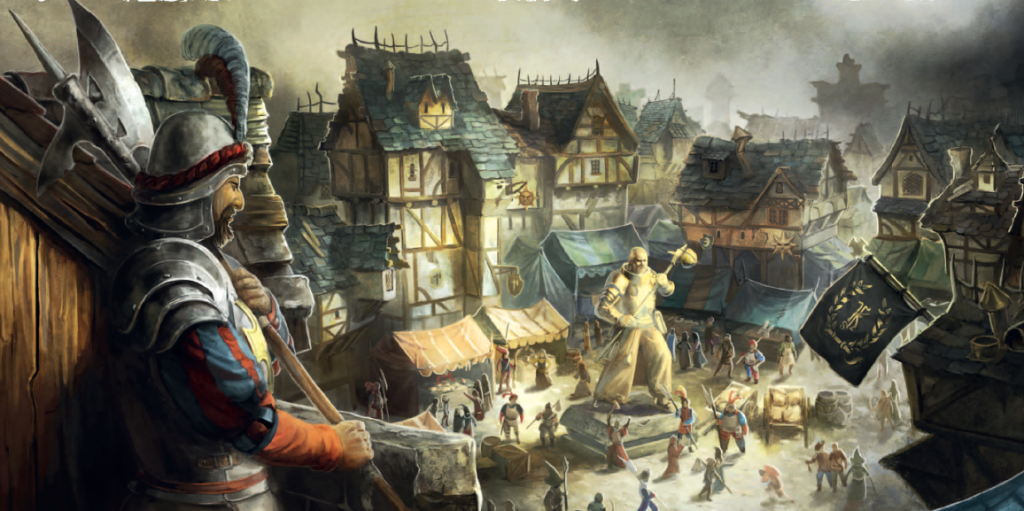
And on a smaller scale the verisimilitude us very much present. Detail is given to industry, law, taxation and local politics; there is very little space given to non-Human or supernatural threats like bands of Orcs or covens of Necromancers. Ubersreik possesses just one wizard of note, and three physicians, which feels reasonable for a town of some 6,000 people. (It also a sizeable lawyers guild, which feels slightly less believable for a town its size, but I very much appreciate lawyers being a part of the setting.) So while the setting certainly nods at the fantasy nature of the Warhammer world, a lot of what is detailed fits very well into a low fantasy setting. Meanwhile the town is littered with interesting details, such as the Halfling mafia; a Dwarven clan exiled from a lost hold and exhausting its fortune on failed attempts to retake it; and a collection of excellent and original cults. I really appreciated that neither of the two Slaaneshi cults are sex-crazed; one is a Fight Club-inspired cult (glorying in painful but non-lethal fights); the other dedicates itself to witnessing horrible acts. Both feel original (for Warhammer) and believably nasty.
Conclusion
The Starter Set is a genuinely fantastic introduction to WFRP. It absolutely oozes character – whether that’s the pregen characters or the NPCs described in the main adventure and city guide. The Ubersreik Guide is probably the best city guide I’ve ever read (and it has strong competition from the Marienberg 1st edition city guide) – absolutely stuffed with fun details and adventure hooks. Throughout the set there’s a really clear desire to stay true to the spirit of WFRP-of-old, while nevertheless providing new and interesting content – often going beyond the obvious tropes to create something properly original.
And that’s in addition to artwork which is absolutely top-notch, dripping with character and fun little details.
I can’t recommend this enough!
Buy the WFRP Starter set at DriveThruRPG. This is an affiliate link so I receive a small payment for purchases made using it.

Pingback: Review: Fourth Edition Rulebook (Part 1: System) – Ill Met by Morrslieb
Pingback: Review: Fourth Edition Rulebook (Part 4: Additional rules) – Ill Met by Morrslieb
Pingback: WFRP 4e: State of the Line – Ill Met by Morrslieb
Pingback: Review: Ubersreik Adventures (part 1) – Ill Met by Morrslieb
Pingback: Review: Altdorf – Crown of the Empire (part 2) – Ill Met by Morrslieb
Pingback: Review: Enemy in Shadows – Ill Met by Morrslieb